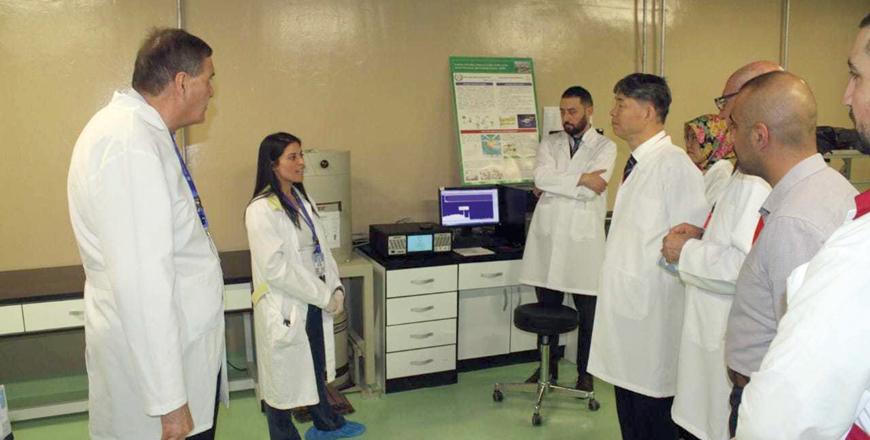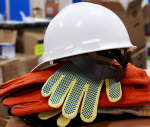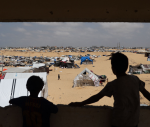You are here
IAEA deputy director visits Jordan Research and Training Reactor
By JT - May 29,2022 - Last updated at May 29,2022

Deputy Director of the International Atomic Energy Agency Hua Liu visits the Jordan Research and Training Reactor at the University of Science and Technology on Sunday (Petra photo)
AMMAN — During a visit to the Jordan Research and Training Reactor (JRTR) at the University of Science and Technology on Sunday, Deputy Director of the International Atomic Energy Agency (IAEA) Hua Liu underscored Jordan’s active and prominent role in cooperating with the agency as a key partner.
Liu emphasised the IAEA’s support for Jordan in the domains of health, agriculture, water desalination and mining, saying that nuclear energy offers a range of peaceful applications, the Jordan News Agency, Petra, reported.
He also underlined the agency’s commitment to working with Jordan to accomplish initiatives related to the Jordanian nuclear programme, such as electricity generation and water desalination, and praised the country’s progress in this area.
Chairman of the Jordan Atomic Energy Commission (JAEC) Khaled Toukan, said that access to peaceful nuclear energy is a sovereign right of every nation, emphasising the importance of nuclear safety systems, expressing Jordan’s full commitment to nuclear safety and standards, as well as the IAEA Safeguards, to ensure the success of any nuclear programme.
JRTR Director Samer Kahook said that the Jordanian reactor is “one of the most advanced and modern reactors in the Arab region”, and it is used for training, scientific research and manufacturing medicinal radioisotopes.
When operating the reactor, all measurements are taken and relevant environmental assessments are completed in order to meet the agency’s requirements as well as the highest international standards for nuclear safety and security, Kahook added.
He noted that the Jordanian reactor is “the only one of its kind in the Arab Mashreq countries” and that it houses a nuclear reactor, a training and educational centre, and facilities for the manufacturing and processing of medical radioactive isotopes, adding that it also has 11 hot cells and a dedicated facility for dealing with low-level radioactive waste and radioactive medium.
Related Articles
AMMAN — The Jordan Atomic Energy Commission (JAEC), in cooperation with the International Atomic Energy Agency (IAEA) and the Arab Network o
AMMAN — Jordan Atomic Energy Commission (JAEC) Chairman Khaled Toukan and Iraqi Minister of Health and Environment Alaa Al Alwan on Thursday
AMMAN — The Jordan Atomic Energy Commission (JAEC) has just completed the hot commissioning tests of the Jordan Research and Training Reacto
















